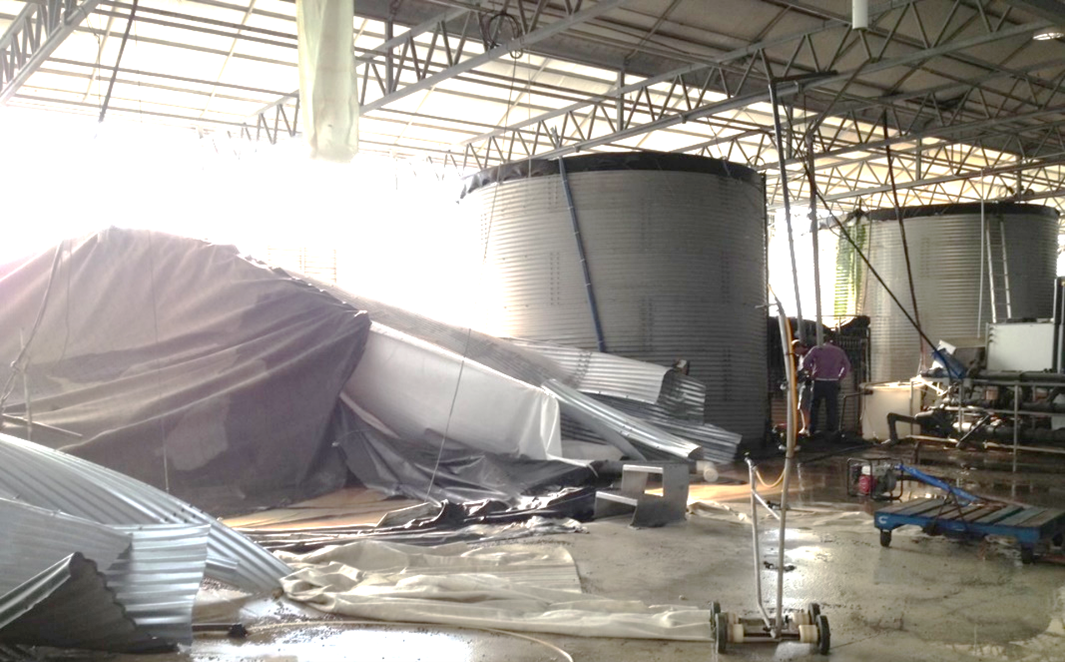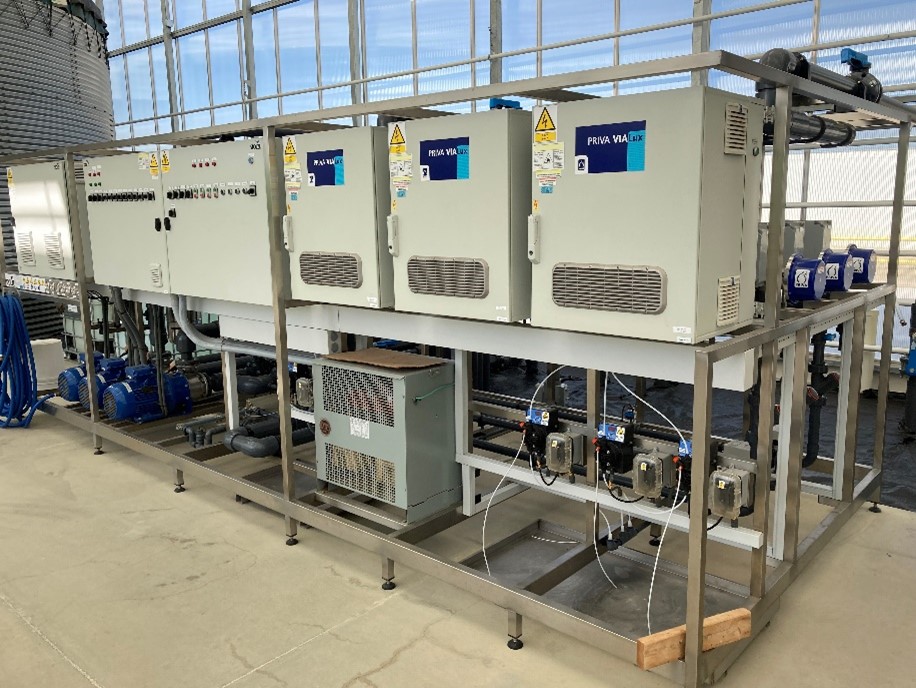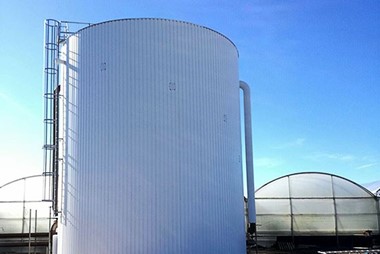Water silos as a creeping risk
Stand at the helm as a sector

When you invest in new or replace existing water silos, it is important to understand the added security available and have a regular inspection schedule of these silos during their lifetime. Silos used for the storage of rainwater and feed water are a must in the horticulture industry. Hundreds of cubic meters of water can be stored efficiently, but there is a danger in this.
If these silos are not maintained properly, they can tear open, resulting in significant water damage. It is important both for the safety of employees and for business continuity that during the lifetime of the silo it does not spontaneously crack open. When a silo cracks, it can lead to crop damage and in some cases entire crop loss. Knowing the potential outcome is sufficient reason to take measures both at the time of purchase and during the life span of these storage silos.
When the steel plates have a plastic coating on both sides, they are much more resistant to corrosion. It is often decided when installing new tanks to only equip the bottom plate with the protective plastic coating. When considering the potential life span of the silo and the hazards associated with corrosion and unexpected bursting, it would seem reasonable when purchasing a new silo, that the standard choice should be to build the entire silo with plastic coated steel plates as this would severely reduce the exposure of loss.
Water silos are constructed with different plate thicknesses (increasing in thickness from top to bottom). Corrosion can quickly reduce the thickness of the plates. With increased thinning of the plate walls, the silo can no longer withstand the pressure of the water stored within, and the metal will tear and burst. It is therefore crucial to check your water silos for corrosion annually. Not only on the outside, but also on the inside. Corrosion on the inside is often not considered. Sometimes, you will find signs on the outside that indicate corrosion, such as streaks of rust water or rust build up around the bolts. Since the inside of the tank is not readily visible on a daily basis, problems can mount quickly if the inside of the tank is not taken into consideration when completing the inspection. For this reason, every year you should check the silos on the inside for corrosion by emptying the silo and removing the blanket and foil from the inner wall and check the plates extensively. Beginning corrosion formation can usually be treated, but at an advanced stage, the metal plate must be replaced. A well-maintained water silo will ensure the safety of personnel and the continuity of cultivation. It is important to note that damage caused by corrosion is excluded in the greenhouse horticulture policy. As a business owner, you also have a financial risk in the event of loss.
The best way to check silos is to inspect them from the inside, as described above. This is not always practical. In response, a silo inspection system has been developed by Hagelunie. With an ultrasonic meter, the thickness of the sheets can be measured from the outside. When, with sufficient measurements, no decrease in plate thickness is measured, you have informed knowledge and a better degree of certainty, about the condition of the silo. This form of testing is now commonplace in the Netherlands and is considered best practices in the overall operation of the greenhouse facility. Based on this new inspection, even the policy conditions can be been extended. When the silo is tested after the 7th year of installation and the results are favorable and approved on the basis of the test protocol, we will not invoke the corrosion exclusion and damage will be covered in the event of loss.
As a Greenhouse horticulture sector, it is important to avoid problems and stay in control. After all, if accidents happen, other parties will normally get involved and make decisions which will affect the future operation of the industry. These decisions or protocols often go above and beyond what the sector would benefit from.
Do you have questions about making your water silos safe and clean, or would you like information about the silo inspection? Please contact your broker or call/email us. Together, we are happy to discuss your needs.


